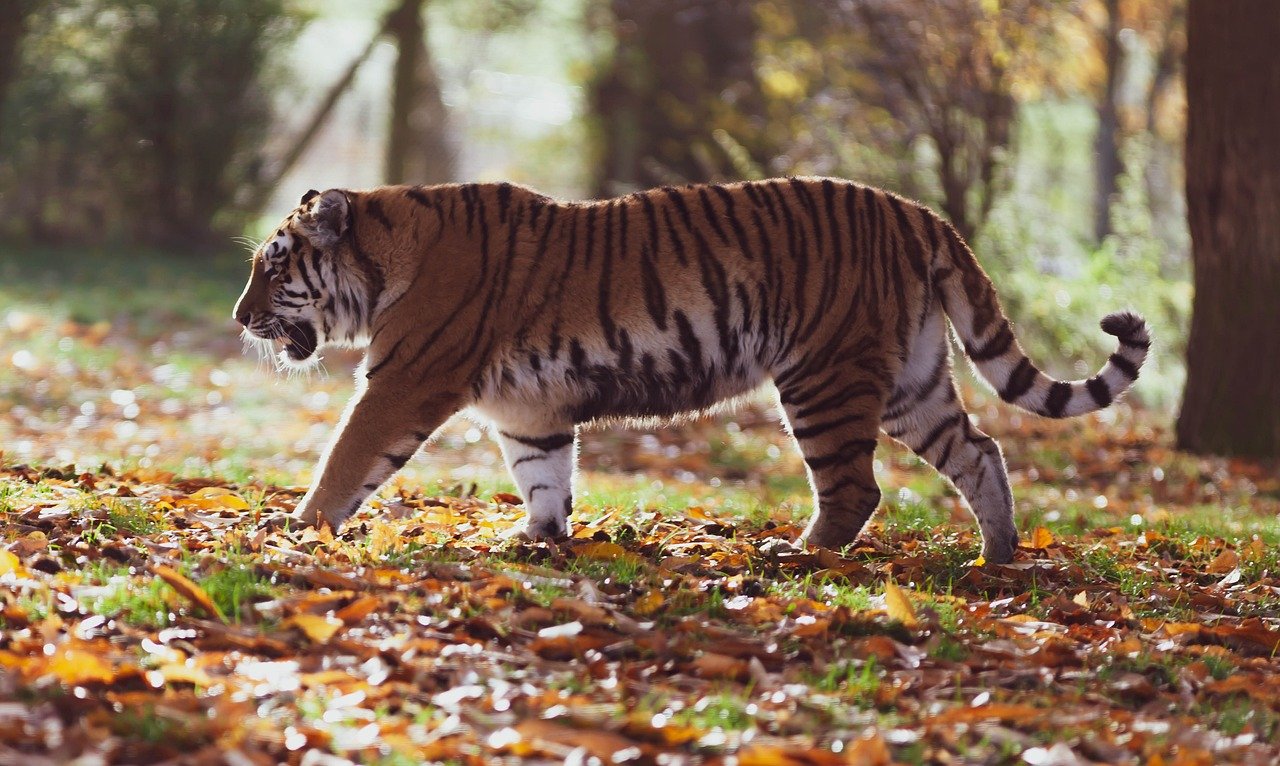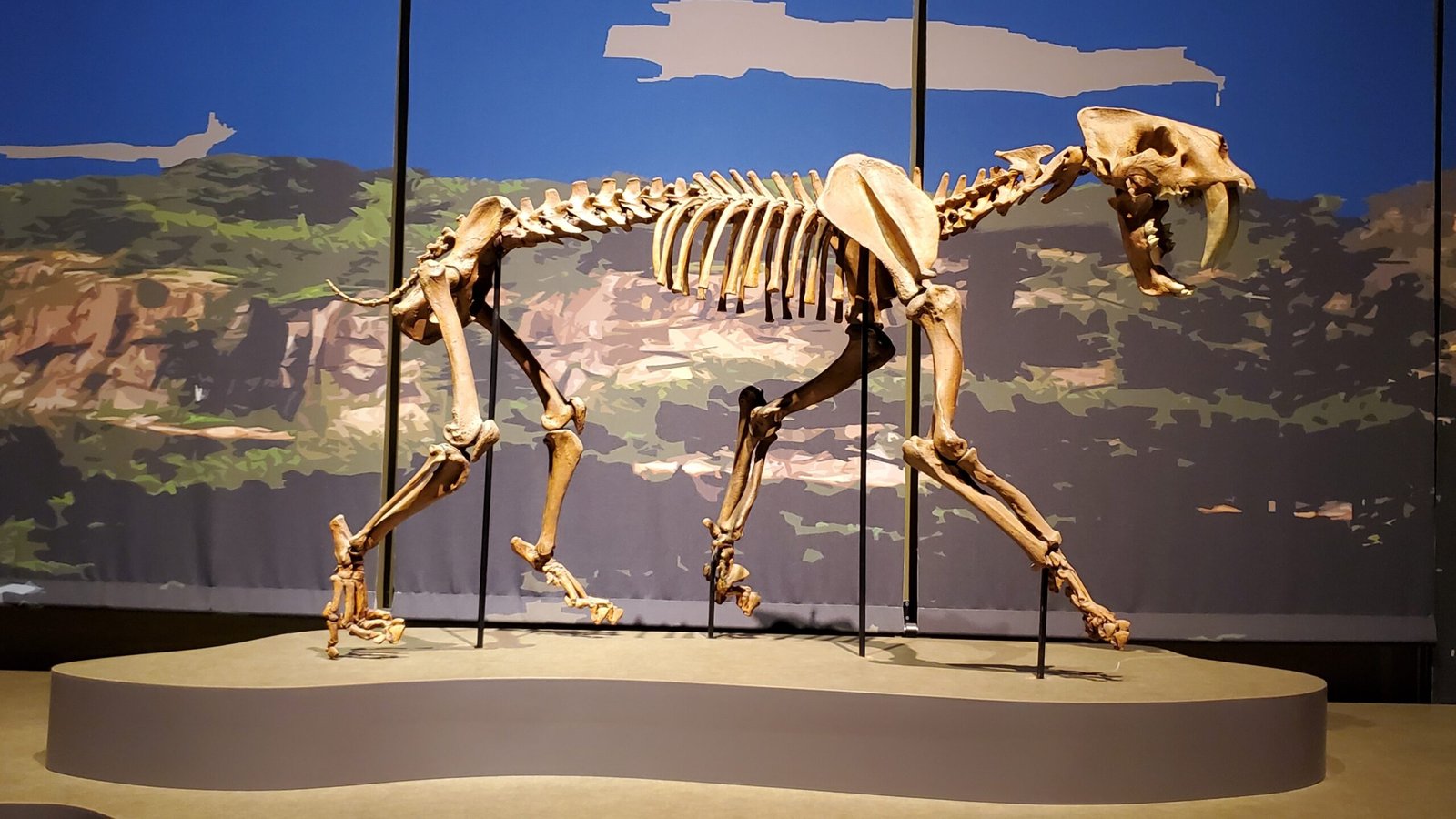The Name That Started a Confusion

You’ve probably heard them called “saber-toothed tigers” your whole life, but here’s the shocking truth: they weren’t tigers at all. These prehistoric predators lived millions of years before modern tigers even existed on Earth. The confusion started when early paleontologists discovered their massive skulls and immediately thought of the biggest, most fearsome cats they knew.
Think of it like calling a dolphin a “sea dog” just because they’re both smart and playful. The name stuck so hard that even today, most people have no idea they’re using the wrong term. It’s one of paleontology’s most persistent myths.
Smilodon Was Their Real Scientific Name

Scientists actually gave these incredible hunters a much cooler name: Smilodon, which literally means “knife tooth” in Greek. This name perfectly captures what made them so terrifying and unique. Unlike the misleading “tiger” label, Smilodon tells you exactly what you’re dealing with.
The name was coined in 1842 by Danish paleontologist Peter Wilhelm Lund when he discovered the first fossils in Brazil. He knew immediately that these weren’t related to any modern big cats. Sometimes the scientific community gets it right from the start.
They Had Three Different Species Names

Here’s where it gets really interesting: there wasn’t just one “saber-toothed cat.” Scientists have identified three distinct Smilodon species, each with their own unique characteristics. Smilodon gracilis was the smallest and most agile, while Smilodon fatalis became the most famous thanks to countless fossils found in the La Brea Tar Pits.
Then there was Smilodon populator, the absolute monster of the group. This South American giant could weigh up to 880 pounds, making it heavier than any modern big cat. Each species earned its name based on where they lived and how they hunted.
The Populator Was Named After Its Hunting Style

Smilodon populator got its name because it literally “populated” the fossil record across South America. But the name has a darker meaning too. These cats were population controllers, apex predators that kept entire ecosystems in balance through their hunting prowess.
Imagine a cat so powerful that its very presence shaped the evolution of every other animal around it. That’s exactly what the populator did for millions of years. Its name reflects not just its abundance, but its ecological dominance.
Fatalis Means Deadly for a Reason

Smilodon fatalis earned its ominous name through sheer killing efficiency. Those famous saber teeth weren’t just for show—they were precision instruments designed to deliver fatal wounds to massive prey. The name “fatalis” captures the inevitable outcome of encountering one of these predators.
What makes this even more chilling is that we know exactly how deadly they were. Fossil evidence shows they regularly took down animals three times their size. When paleontologists named this species, they weren’t being dramatic—they were being accurate.
Regional Nicknames Varied Wildly

Different cultures around the world came up with their own names for these prehistoric giants long before scientists got involved. Native American tribes had dozens of different terms, many focusing on the distinctive teeth or their legendary hunting abilities. Some called them “long-tooth spirits” or “shadow hunters of the ancient times.”
In South America, local communities developed names that emphasized their size and power. These regional names often carried spiritual significance, treating the cats as mythical beings rather than simple predators. It’s fascinating how different cultures all recognized something supernatural about these animals.
Hollywood Made the Wrong Name Famous

Movies and TV shows are largely responsible for cementing the “saber-toothed tiger” mistake in popular culture. From cartoon cavemen to blockbuster films, entertainment media kept using the wrong name because it sounded more exciting and familiar to audiences. “Tiger” was a word everyone knew and feared.
The irony is that the real story is actually more amazing than the Hollywood version. These weren’t oversized tigers—they were something entirely unique, a evolutionary experiment that worked perfectly for millions of years. Sometimes reality is stranger and more wonderful than fiction.
The Name Game Continues Today

Even now, scientists debate what to call these magnificent predators in popular discussions. Some push for “saber-toothed cat” to be technically correct, while others argue that “saber-toothed tiger” is so embedded in culture that fighting it is pointless. Museums often use both names on their displays to avoid confusion.
What’s really happening is a slow shift toward accuracy. Educational programs increasingly use the correct scientific names, and newer generations are learning the truth. It’s a perfect example of how science communication evolves over time.
Why Names Matter More Than You Think

Getting the name right isn’t just about being scientifically accurate—it’s about respect for these incredible animals and the ecosystems they dominated. When we call them “tigers,” we’re diminishing their unique place in evolutionary history. They deserve to be remembered for what they actually were, not compared to modern cats.
Names shape how we think about extinct species and their importance. The more we understand about Smilodon as its own remarkable lineage, the more we appreciate the incredible diversity of life that once existed on Earth. Every time someone learns the real name, we’re honoring these ancient predators properly.
Conclusion

The next time someone mentions “saber-toothed tigers,” you’ll know the truth behind one of paleontology’s most persistent naming mistakes. These weren’t tigers at all, but something far more extraordinary—highly specialized predators that ruled their world for millions of years. From Smilodon gracilis to the mighty populator, each species carved out its own legendary place in prehistoric history.
Understanding their real names helps us appreciate just how unique these animals truly were. They weren’t just ancient versions of modern cats—they were evolutionary masterpieces that deserve to be remembered correctly. What other “common knowledge” about prehistoric life might be completely wrong?
Hi, I’m Bola, a passionate writer and creative strategist with a knack for crafting compelling content that educates, inspires, and connects. Over the years, I’ve honed my skills across various writing fields, including content creation, copywriting, online course development, and video scriptwriting.
When I’m not at my desk, you’ll find me exploring new ideas, reading books, or brainstorming creative ways to solve challenges. I believe that words have the power to transform, and I’m here to help you leverage that power for success.
Thanks for stopping by, Keep coming to this website to checkout new articles form me. You’d always love it!






